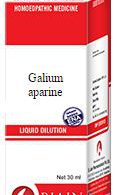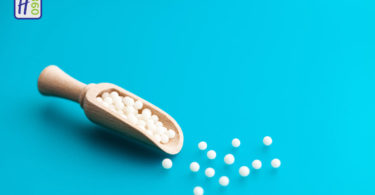Introduction
| Synonyms | Potassium, Kalium, Potash |
| Symbol | K+ |
| Group | I [A] |
| Series | 4 |
| Melting Point | 630C |
| Specific Gravity | 0.86 |
| Atomic Number | 19 |
| Atomic Weight | 39.1 |
- The word ‘Potassium’ has been derived from the word ‘Potash.’(Pot means ash; the remains of burnt vegetable matter). In Europe, it is named as ‘Kalium’ and it is derived from an Arabic word ‘Kaly’ – which means ‘ash’.
- Dr. Davy first isolated it in 1807, by electrolysis of fused potassium hydroxide
- It does not occur in nature in free state. It is the seventh most common element on the earth. It is slightly radioactive.
- The Earth’s crust contains about 2.5 percent potassium. Its salts are present in fertile soils, in a combined state with organic acids, plants, mineral springs and oceans. In nature, it occurs as Carnallite, Sylvine, Kanite and Saltpeter and in many rocks as Silicates.
- It is a soft, silvery-white metal. Its chemical properties are similar to that of sodium, but the reactivity is greater than the sodium. Metallic potassium is used in photoelectric cells. The alloy of sodium and potassium is used as liquid in various industries to lower the temperature. It is often stored in paraffin oil or sealed cans.
K+ in Human Body
Potassium is principally an intracellular colloidal content. It is a major determinant of volume of the cells and osmolarity of the body fluid.
Distribution
The concentration of K+ in whole body is as follows:
| Blood | 200 mg% |
| Plasma | 20 mg% |
| Corpuscles | 440 mg%. |
| Muscles | 250 – 400 mg% |
| Nerves | 530 mg% |
| Intracellular | 34,000 m. mol |
| Extracellular | 75 m. mol |
Extracellular concentration does not reflect the whole body K+ status.
Daily Requirement
Optimum proportion of Na+: K+: Ca2+: Mg2+ is 100:1.7:1.1:0.5. An increased or decreased level of any one of these chemicals disturbs the functions of all others.
| 0-1 Year | 350 – 1275 mg |
| 1-11 Years | 550 – 4575 mg |
| Above 11 Years | 1875 – 5625 mg |
Hyperkalaemia
It is the increased level of k+ in the blood.
Causes
- Acute or chronic renal failure
- Adrenal insufficiency
- Insulin insufficiency
- Shift of K+ from tissues e.g. tissue damage, metabolic acidosis, neuro-muscular diseases, drug-induced
- Excessive intake of K+
- Pseudo-hyperkalemia
Features
- Arrhythmia. Tall T-wave and prolonged P-R interval. QRS complex is prolonged and finally tends to merge with T-wave in a sine-wave configuration.
- Hypothyroidism
- Respiratory paralysis
- Flaccid quadriplegia
- Progressive ascending muscular atrophy
Hypokalaemia
It is the decreased level of K+ in the blood.
Causes
- Deficiency of ADH
- Increased level of aldosterone, gluco-corticoids, mineralo-corticoids and insulin
- Poor intake of food
- Acute gastro-enteritis
- Diabetic keto-acidosis (DKA)
- Mg2+ deficiency
- Steroid toxicity
- Abuse of laxatives and diuretics
- Hypertension
Features
- Paresis and paralysis
- Flattening or inversion of T-wave, depressed ST segment, prolonged QT interval and prominent U-wave
- Sub-endocardial patchy necrosis and myocardial dysfunction
- Impairment of renal tubular functions
- Increased fat metabolism
- Sluggish breakdown of glycogen, which leads to diabetes mellitus
- Ileal stasis
- Na+ imbibition and retention of water
- Malabsorption syndrome
List of Remedies
Kali aceticum, Kali antimonium tartaricum, Kali arsenicosum, Kali asparacum, Kali auro cyanatum, Kali bichromicum, Kali bioxalicum, Kali bitartaricum, Kali borotartaricum, Kali bromatum, Kali carbonicum, Kali causticum, Kali chloricum, Kali chlorosum, Kali chromicum, Kali citricum, Kali cyanatum, Kali ferro-cyanatum, Kali fluoricum, Kali formicum, Kali gluconicum, Kali hypophosphoricum, Kali iodatum, Kali manganicum, Kali muriaticum, Kali natrum tartaricum, Kali tartaricum, Kali telluricum, Kali thiocyanate, Kali xanthogenicum, Causticum.
Potassium remedies are deep acting. Though they are chiefly used in chronic cases, they have acute dimensions too.
Kali Essence
Monogram
Syco-Syphilitic: Dropsical; Debilitated; Destructive; Degenerative; Dry; Calcareous; Cancerous; Cachectic; Catarrhal; Epileptic; Painful; Paralytic; Rheumatic
Mind
Disposition: Anxious; Agitated; Dependent; Duty bound; Irritable; Conformist; Weak willed; Attached; Routinist; Restless; Religious; Controlling; Conscientious; Over-sensitive; Hypochondriac; Hysterical; Selfish; Timid; Insecured
Ailments from
Emotions: Care; Stress; Grief; Insult; Irritable; Bad-news; Fear; Anticipation; Anger; Suspense; Excitement; Shock
Injuries: Abortion; Surgery; Contusion; Sprain; Burn; Fall
Drugs: Diuretics; Quinine; Mercury; Blood transfusion; Lead
Depleting Factors: Sweat; Exertion; Coition
Suppression: Emotion; Eruption; Fistula; Discharges
Modalities
Agg: Milk, beans, fattty things, eating, touch, 2 to 4 A.M.
Amel: Deflation, warm applications
Kali Basic
- Kali family is made up of Potash in addition with other salts
- Profound muscular weakness and eventually paralysis. Lassitude, weakness, heaviness of extremities, depression of the sexual powers, sexual erethism.
- Affect markedly the mucous membranes – producing congestion, inflammation, ulceration and increased and altered mucous discharges. They have a power to arrest abnormal secretions.
- Hemorrhagic and cancerous diathesis
- Kali salts produce an instability of the nerves; easy startling from noise or touch
- Oedematous swelling, twitching, jerking, choreic movements and convulsions. Stitching, shooting, tearing and wandering pains.
- Papular and pustular eruptions; unhealthy, unrefreshing and indolent ulcers
- Lack of vital heat; chilly patient
- Kali patient is dropsical, debilitated, destructive, rheumatic and epileptic. Anxious, agitated, dependent, conformist, irritable, weak-willed, restless, religious, selfish, insecure and oversensitive.
- They are routinist, conventional and traditional. They follow ISOPRAXISM i.e. imitation in their life. They are conscientious and controlling. They may hide their emotions and express through bodily gestures. They refer to an expression of emotional attachments to other people.
- Aggravation: After midnight, early morning, motion, fat, eating, milk. They have aggravation of the chest symptoms in the forenoon and bowel symptoms in the afternoon
- Amelioration: Warm application, deflation
Kali Key Words
Kali Phosphoricum
- Aged, oversensitive. Atrophic, degenerative, calcareous, cancerous.
- Chilly patient. Neurotic, fagged, paralytic.
- Syphilitic miasm predominates
Kali Carbonicum
- Atonic, dropsical, devitalized, sensitive, calcareous, paralytic. Bilious, dyspeptic.
- Chilly patient
- Sycotic miasm predominates
Kali Arsenicosum
- Cachectic, calcareous, exudative. Neurotic habit.
- Chilly patient. Lean, thin, skinny.
- Psora-syphilitic miasm predominates.
| Kali Generals | ||
| Behaviour | Character | Pathology |
| Sub-acute to Chronic | Depressed | Functional to Structural |
| Stubborn chronicity | Vulnerable | Indolent congestion |
| Deep, long-acting | Adynamic | Vegetative degeneration |
| Metastasizing | Slow reaction | Arteriosclerosis |
| Periodical | Paucity of symptoms | Spasmodic effects |
| Pace – slow | Heterogenous portrait | Stringy, tough discharge |
| Exacerbation of phase | Unrepairing, unhealthy | Yellow-green discharge |
| Periodic, erratic, irregular | Sensitive to noise, weather | Wandering, sharp pain |
Kali Bromicum
- Active, anti-rest, hysterical, epileptic, paralytic
- Hot patient. Periodical attacks.
- Syco-syphilitic miasm predominates
Kali Bichromicum
- Adherent, epileptic, calcareous, sensitive, cancerous. Ulcerative degeneration.
- Ambithermal patient
- Rheumatic and catarrhal affection. Degenerative, plethoric, torpid, weary, hysterical, skinny.
- Syphilitic miasm predominates
Kali Sulphuricum
- Hot patient
- Rheumatic and calcareous affection
- Sycotic miasm predominates
Kali Silicicum
- Adynamic, supportive, calcareous, torpid. Exudative degeneration.
- Chilly patient
- Syphilitic miasm predominates
Kali Iodatum
- Allergic, destructive, scrofulous, scorbutic
- Hot patient. Exudative and cancerous degeneration.
- Syphilitic miasm predominates
Kali Fluoricum
- Ambithermal patient
- Cachetic, calcareous. Hard, glandular degeneration.
- Syphilitic miasm predominates
Kali Ferrocyanatum
- Anaemic. Debilitated, hearty, touchy.
- Neuralgic affection
- Tubercular miasm predominates
Kali Aceticum
- Cachetic, declining. Debilitated, diabetic, dropsical.
- Exudative degeneration
- Tubercular miasm predominates
Kali Cyanatum
- Cachetic, cancerous, epileptic. Chronic destructive disorders.
- Neuralgic affections
- Tubercular miasm predominates
Kali Chloratum
- Chilly patient
- Chronic destructive disorders. Scrobutic, toxaemic.
- Hemorrhagic diathesis. Neuralgic affections.
- Tubercular miasm predominates
Kali Nitricum
- Asthmatic, scorbutic, debilitated, calcareous. Dyspeptic, whitish.
- Cancerous diathesis. Congestive and exudative disorders. Rheumatic affections.
- Syco-tubercular miasm predominates.
Kali Muriaticum
- Exudative, fibrinous, glandular affections
- Sub-acute and embolic changes
- Sycotic miasm predominates
Causticum
- Atrophic, paralytic, calcareous, neurotic, senility
- Chilly patient
- Fissure and neuralgic affections
- Standstill condition. Sycotic miasm predominates.
Body Language of Kali Patients
Human beings communicate through verbal and non-verbal languages. Research has shown that 35 percent of the messages are carried out verbally while 65 percent are conveyed non-verbally. Each homoeopathic medicine has its unique verbal and non-verbal languages. Kali people are conscientious and controlling. They may hide their emotions and express them through body languages. ‘Visible code’ is presented here in the context of dispositions or temperamental traits and the Kali medicines are discussed in group.
Defensiveness
- Arms and legs crossed
- Head down with chin depressed. Leans back in chair.
- Minimal eye contact. Pursed lips. Rigid body
Medicines: Caust., Kali carb., Kali phos., Kali sil.
Anger
- Clenched fists. Dilatation of pupils.
- Lips closed and held in tight thin line
- Rigid body. Squinting of eyes.
Medicines: Kali ars., Kali bich., Kali brom., Kali carb., Kali iod.
Evaluation
- Crossed legs. Slightly tilted head.
- Head to cheek gestures
- Sucks glasses / pencils
Medicines: Caust., Kali ars., Kali bich., Kali carb.
Nervousness
- Clears throat. Covers mouth while speaking.
- Darting of eys. Tapping of fingers.
- Tugging at ear or pant. Waving of foot.
Medicines: Caust., Kali ars., Kali bich., Kali brom., Kali carb., Kali mur.
Rejection
- Body withdrawn
- Clears throat
- Crossed arms/legs. Head down.
- Squinting or rubbing of eyes
- Touching or rubbing of nose
Medicines: Caust., Kali sulph., Kali sil., Kali phos., Kali carb.
Frustration
- Blind staring
- Hand on forehead and eyes down
- Head down. Runs hands in hair.
- Short breath
- Tightly clenched hands
Medicines: Kali iod., Kali ferr., Kali sulph., Kali phos., Caust.
Needing
- Bites fingernails. Examines cuticles.
- Gently rubs some objects e.g. ring, watch etc.
- Pinches the fleshy part of hands
Medicines: Caust., Kali sulph., Kali sil., Kali phos., Kali carb., Kali ars.
Indifference
- Blank stares. Relaxed posture, sloughing.
- Drumming of table
- Head in hand. Slack lips.
- Swinging / crossed foot
- Tapping of foot and fingers
Medicines: Kali ars., Kali bich., Kali brom., Kali chlor., Kali carb.
Hands
Hands are the most expressive part of our body. Watching a hand movement is like piercing the brain.
Medicines: Kali brom., Kali iod., Kali phos.
Bite
It is the act of closing one’s jaws tightly, to cut, grasp or tear with the teeth as in clenching the jaws in frustration or anger.
There are 10 Kali medicines listed under ‘Anger’ (vide Murphy’s Repertory, Page no. 994) and ‘Causticum’ listed under ‘Ailments after anger’. Interestingly, ‘Causticum’ has the symptom ‘Bites inside the cheeks while chewing’ (vide A Select Materia Medica Part I, 3rd Edition, Page no. 173).
Kali Nucleus
Causticum
- Ailments from grief, injustice, vexation, cares, worries, frustration
- Over-compassionate, self-sacrificing, anxious, idealistic
- Slowly progressing and absence of true inflammation
- Injuries: burns, gunshot wounds, gynaecological operations
- Never been well since that last burn
- Desire: Smoked meat, salt and salty foods, cold
- Aversion: Sweets
- Amelioration: Damp weather, discharges – but rheumatism < damp weather
Kali Aceticum
- Amaurosis suddenly appearing during acute nephritis
- Sweat: offensive; sweaty head < 4 P.M.
- Urine: profuse, offensive, watery with ammoniacal or sweetish odour
- Itchy eruptions < warmth of bed
- 5 D’s: Diabetes, Diarrhoea, Dropsy, Debility, Diuresis
Kali Arsenicosum
- Nervous, anxious, restless. Anaemic, chilly.
- Tendency for malignancy
- Rheumatic, gouty and syphilitic affections
- Pains < change of weather
- Aggravation: Touch, milk, 2 – 3 A.M.
- Amelioration: Warmth, rainy weather
Kali Bichromicum
- Ambitious, perfectionist, adherent, aversion to business
- Slow but deep process. Sticky, stringy, viscid, tough discharges.
- Absence of fever or very little fever
- Pains: Quick, migrating, spotty, sharp < morning, 2 – 3 A.M.
- Desire: Beer, acids
Kali Bromatum
- Ailments from grief, business failure, worries, sexual excess.
- Want of moral feeling. Fidgety, wriggling.
- Chiefly affects sexual organs. Diseases with slow onset and without pain.
- Warm blooded persons. Acne, epilepsy.
Kali Carbonicum
- Anxiety, anticipation, agitation
- Dropsy: everywhere; notable over the upper eyelids
- Diseases with insidious onset. Chronic, organic lesions.
- Emotions striking at the pit of the stomach. Pains: Stitching, flying.
- Aggravation: Touch, 3A.M.
Kali Chlorosum
- Aphonia, asthma, coryza, diphtheria
- Epigastrium sensitive, puffy face
- Constriction of throat and chest
- Streptococcal affections of throat
Kali Citricum
- Bright’s disease, tympanitis
- Constant flow of mucous, copious flatus
- Pain in stomach and abdomen as if a machine was working inside and skimming the interior
Kali Cyanatum
- Suddenness of ailments. Irritability with absence of people, cold perspiration.
- Agonizing neuralgia < 4 A.M. – 4 P.M.
- Rheumatism of joints < morning and motion
- Cancer of tongue
Kali Fluoricum
- Hard mind, conflicts between idea and super-ego
- Cancerous diathesis
- Warm blooded people
Kali Iodatum
- Medicine for organic changes; slow reaction
- Lagging repairing process, diffuse sensitiveness
- Anti-rest, nervous mobility < 4 – 7 A.M. and 5 P.M.
- Sourness of skin; warm blooded
- Acute upper respiratory tract infection; violent sneezing, discharge first watery, then greenish; frontal sinusitis.
Kali Muriaticum
- Sub-acute inflammation. Fibrinous exudates.
- Indicated in chronic suppurative otitis media, quinsy, embolism
- Discharges: Milky white, thick and sticky
- Tongue: Dry, slimy, grayish-white, sour taste, indigestion
- Pains: Cutting, sticking and shifting
Kali Nitricum
- Asthma; bronchial and cardiac, right-sided nasal polyp
- Suddenness of attacks. Pains: Dull, stitching and throbbing.
- Scalp and testes sensitive
Kali Oxalicum
- Extreme depression, tendency to faint, insanity.
- Throbbing pain in head with extreme thirst, copious vomiting and convulsions
- Cramps in legs, nails and fingers
Kali Phosphoricum
- Lack of nerve power; state of adynamia and decay. Nervous insufficiency followed by vital insufficiency.
- Discharge: Putrid, golden-yellow
- Aggravation: 3 to 5 A.M.
Kali Picricum
- Violent eructations, jaundice, pain at pit of stomach
- Intermittent fever
- Urine: Reddish brown due to presence of urate of ammonia
Kali Salicylicum
- Arteriosclerosis, chronic rheumatism
- Vomiting of pregnancy
Kali Sulphuratum
- Weak, pale with cold body
- Acute gastritis; chill followed by fever and sweat
- Violent gastro-intestinal irritation; hiccough
- Pulse rapid and strong
Kali Sulph Chromico
- Chronic cold, hay fever, sneezing. Red and watery eyes.
- Very fine threads from septum to external wall
Kali Sulphuricum
- 3rd stage of inflammation, desquamation. Anguish from heat; torpid process.
- Discharges: Profuse, thin or thick, deep yellow
- Schussler’s Pulsatilla. Tense in temperament, but sluggish and inactive.
- Pains: Shifting, stitching, tearing and festering.
Kali Silicatum
- Cryophobic, lassitude; desire to lie down
- Lack of reaction
- Discharges: Bloody, thick, yellow, offensive
- Deep acting remedy. Chilly patient.
- Warts: Painful suppurated, stinging
Kali Tartaricum
- Profound weakness and emaciation
- Violent vomiting, black-green in colour
- Violent diarrhoea, coffee-ground in colour
- Tongue: Dry, brown
- Thighs and legs paralyzed; paraplegia
Kali Thiocyanatum
- Destructive inflammation
- Malignancy
Kali Tellurium
- Garlic odour of breath; excessive salivation
- Appetite increased
- Tongue: White coated and swollen
Kali Xanthogenicum
- Acts on cortical substance of brain
- Marked degeneration; senility
- Impotency
Inter-Kali Comparison
Mind
Apprehensive: Kali arsenicosum and Kali carbonicum ranks high.
Industrious: Kali bichromicum ranks high due to adherent attribute.
Miser: Kali carbonicum ranks high due to hoarding and greed instinct.
Refined: Causticum ranks high; Kali iodatum is on the opposite pole. Kali bichromicum is also coarse and unrefined.
Religious: Kali bromicum and Causticum ranks high – the former is out of guilt and abnormal mental state.
Sensitive: Kali carbonicum ranks high due to CO32- (all carbonates are sensitive).
Anti-rest: Kali iodatum ranks high due to preponderance of iodine and over sensitiveness of potassium.
Exhausted: Kali phosphoricum ranks high.
Pessimist: Causticum has the darkest mood and temper due to long lasting grief, vexation etc.
Schizophrenic: Kali bromatum is evaluated high in view of its disorganized state, delusion, melancholia and suicidal mania.
Diffident: Kali silicatum ranks high; then Kali phosphoricum.
Conscientious: Kali bromatum ranks high.
Inter-Kali Comparison
Shiny: Kali arsenicosum ranks high. After that comes Causticum.
Skinny: ‘Lack of flesh’ – Kali arsenicosum ranks high.
Adherent: Kali bichromicum ranks high.
Paralysis: Causticum ranks high – both at mental and physical levels.
Obesity: Kali carbonicum ranks high.
Action
Depressive of nerves: Kali phosphoricum
Excitable of nerves: Kali carbonicum
Glandular: Kali iodatum
Discharges
More Green: Kali bichromicum
More Yellow: Kali sulphuricum
More White: Kali muriaticum
More Bloody: Kali phosphoricum
Miasm: All Kalis are anti-psoric mainly but Kali bichromicum and Kali iodatum have anti-syphilitic actions.
Side affinity
| Right | Left |
| Causticum (right then left) | Kali bichromicum |
| Kali carbonicum | Kali muriaticum |
| Kali nitricum | Kali chloratum |





